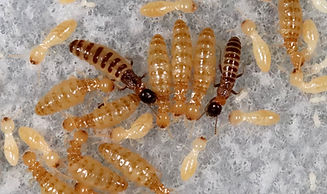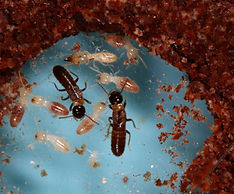Tatsuya Inagaki Ph.D.
Interaction between termites and gut microbes
Host-microbe symbiosis is ubiquitous around the world. Termites and the gut microbial community possess an interdependent, stable, and long-standing symbiotic relationship that originated over 130 million years ago. Several protists and hundreds of bacteria are observed, and most species are only found in the termite gut. Termites cannot live without such microbes, and most gut microbes cannot live outside the host body. How have termites maintained such a complex symbiotic system? As a consequence of long evolutionary history, what kind of functions and relationships have been maintained in this system?

My research focus is the function and dynamics of the gut microbial community in termite life history.
Gut microbial community in a subterranean termite, Reticulitermes speratus
1. Caste, sex-specific protist community in termite gut
In termite colonies, the division of labor between castes (social role) is established: king and queen reproduce, while workers and soldiers engage in other tasks such as foraging, nest construction, and defense.
We found that the king and queen did not have protists, while workers and soldiers had plenty of protists. We also found that there were sex differences of protist community between male and female workers in some colonies, suggesting an important role of sex even in non-reproductive individuals.

Primary king, queen, secondary queens, workers of Reticulitermes speratus
2. "Gut microbial pulse" supports parental investment to offspring
In incipient colonies, young king and queen should engage in many tasks such as nest construction, foraging, egg production, and caring for larvae without workers' help. How do they obtain nutrition for reproduction and feeding larvae?
By tracing the dynamics of the amount of protists and nutrition in young kings and queens during colony foundation, we revealed the rapid increase and decrease of protists (gut microbial pulse) contribute to investment to offspring. Our result suggests termite parents increase the number of protists and digest them to obtain nutrition. Perhaps termites have some mechanisms to control the amount of protist.

Incipient colony of Reticulitermes speratus
3. Intestinal protists contribute to nest hygiene
Termite gut microbes provide essential nutrition to the host through wood digestion and nitrogen fixation. Beyond such nutritional contribution, we revealed that the presence of gut microbes is essential for nest hygiene in the termite colony.
Termites construct the nests by their feces. Gut microbes suppress the opportunistic microbes in the gut and keep the feces clean. We also revealed that acetate produced by gut microbes contributes to this function.
